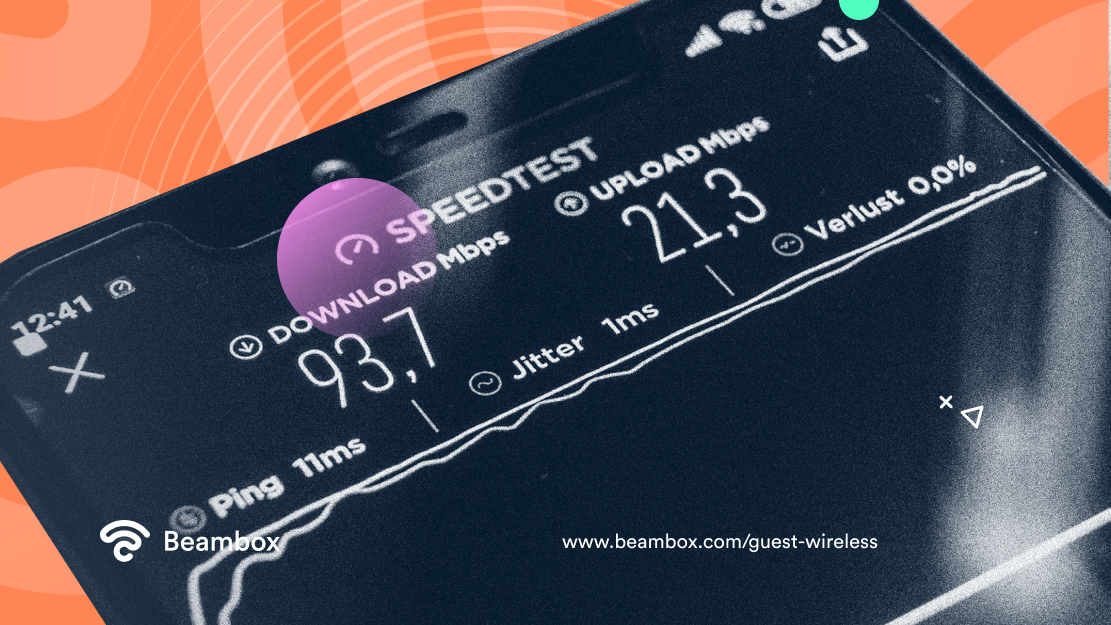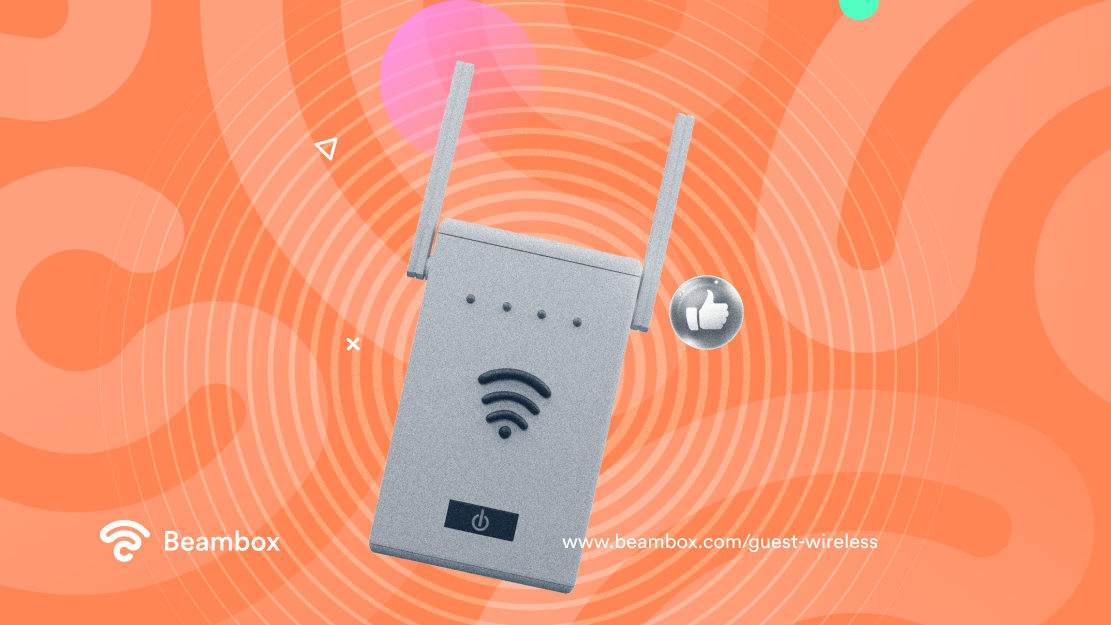Guest Wireless: Networks That Create Value
A guest wireless network can be a valuable asset for any organization. It allows for easy access to the internet for visitors and guests without compromising the security of the main network.
Managed properly, a guest wireless network can benefit both the business and its customers. When visitors enjoy a good WiFi experience in your business, they are more likely to come back and become loyal customers. They may also share their experience with others and become your brand ambassadors. Also, a good WiFi connection can prolong guests’ staying time on your premises, leading to more orders and contributing to a business’s bottom line.
There is an even more powerful benefit to having a guest wireless network in your business. We’ll show you how you can leverage it. Here are the outright benefits of providing guests with wireless access in your business.
Benefits of Guest Wireless Access
One of the main benefits of having guest wireless access is that it offers value added convenience for your visitors and guests. This is especially useful in hotels, airports, conference centers, and restaurants where a high volume of visitors need internet access. A separate guest network lets visitors connect to the internet without having access to sensitive information on your primary network.
Another benefit of creating a guest WiFi network is that it can be used as a marketing tool. According to the “2019 Annual Customer Engagement Technology Study,” 56% of restaurant diners say that access to free WiFi drives their booking and dining decisions. Additionally, a business can differentiate itself from competitors who may not offer such a service by offering a free guest wifi network.

10 Features That the Best Wireless Router With Guest Network Must Have
The best wireless router with guest network must adhere to certain standards and features. The following are must-see features for guest networks and standards for best practices:
-
Dual-band capability: This allows for both 2.4GHz and 5GHz frequencies to be used, providing a stronger and more reliable signal for both the main and the guest networks.
-
Multiple SSIDs (Service Set Identifiers): This is the name of the wireless network that guests will see when searching for available networks. It is usually a separate SSID from the main network. Labels are either “Guest” or “Public.”
-
VLAN (Virtual Local Area Network) support: Segregation of the guest network from the main network can be done through this, providing an added layer of security.
-
Guest network access controls: The administrator can set specific access controls for the guest network, such as Internet access, bandwidth limits, and time restrictions.
-
Firewall and intrusion detection: An extra layer of security to the guest network, helping to prevent unauthorized access and protect against hacking attempts.
-
Quality of Service (QoS): This allows for the prioritization of network traffic, ensuring that important traffic, such as VoIP or streaming video, is given priority over less important traffic.
-
Easy setup and management: The router should be easy to set up and manage, with a user-friendly interface and clear instructions.
-
Remote management: This allows the administrator to manage the router settings and guest network remotely, making it easy to make changes or troubleshoot issues.
-
WPA3 or later security: This ensures that the guest network has the latest and most secure encryption methods.
-
Parental controls: This allows the administrator to set access restrictions for the guest network, such as limiting access to certain websites or blocking inappropriate content.

Additional Standard Guest Network Wireless Settings to Consider
Standard guest network wireless settings will vary depending on the router and the organization’s specific requirements. However, a guest network router is essential for your business’s marketing strategy. In addition to what is listed above, some standard practices include:
-
Security: The guest network should use a different security protocol than the main network. WPA2 or WPA3 is recommended for guest networks as it provides secure encryption.
-
DHCP: DHCP (Dynamic Host Configuration Protocol) should be enabled on the guest network to assign IP addresses to guests automatically.
-
Access controls: The administrator should set specific access controls for the guest network, such as Internet access, bandwidth limits, and time restrictions.
-
DHCP Lease Time: This setting determines how long an IP address is assigned to a device before it is released and reassigned. A shorter DHCP lease time can prevent IP address conflicts.
It is important to note that these settings are general. Always consult the router’s manual or contact the manufacturer’s technical support to configure the guest network router correctly and securely.
Guest Wireless Acceptable Use Policy (AUP)
Access to a guest wireless network is a privilege. It is only fitting that certain behaviors be observed. A guest wireless acceptable use policy is a good idea and standard practice.
An Acceptable Use Policy or AUP is a set of guidelines meant to ensure the network’s security and integrity, and protect all users’ rights and interests.
Ten common elements of an AUP for a guest WiFi network include:
-
Legal compliance: Users must comply with all applicable laws, regulations, and policies while using the guest wireless network.
-
Network security: Users must not engage in any activities that could compromise the security of the network, such as hacking, phishing, or spreading malware.
-
Appropriate use: Users must use the guest WiFi network only for lawful and appropriate purposes, such as internet browsing and email.
-
Bandwidth usage: Users must not use excessive bandwidth, as this can slow down the network for other users.
-
Sharing of information: Users must not share confidential or proprietary information over the wireless network.
-
Privacy: Users must respect the privacy of others and must not engage in activities that could compromise the privacy of other users.
-
Prohibited content: Users must not access or distribute illegal, inappropriate, or offensive content over the Wi-Fi network.
-
Responsibility: Users must be responsible for their devices and take precautions to protect them from theft or damage.
-
Complaints: Users must report any complaints or issues related to the guest wireless network to the appropriate authorities.
-
Consequences: Users who violate the AUP may have their access to the guest WiFi network revoked and may be subject to disciplinary action.
The AUP may vary depending on the needs of the business. You may include other specific policies and restrictions as needed.
Guest Wireless Best Practices
Implementing the above guest wireless best practices will ensure that the guest wireless network is secure, stable, and easy to manage.

Here is a summary of the best guest wireless practices.
-
Dual-band capability: Using 2.4GHz and 5GHz frequencies for stronger and more reliable signals for both the main and guest networks.
-
Multiple SSIDs (Service Set Identifiers): Using separate SSIDs like “Guest” or “Public.”
-
VLAN (Virtual Local Area Network) support: Segregation of the guest network.
-
Guest network access controls: Setting specific access controls for the guest network.
-
Firewall and intrusion detection: Preventing unauthorized access and protecting against hacking attempts.
-
Quality of Service (QoS): Ensuring that important traffic, such as VoIP or streaming video, is given priority.
-
Easy setup and management: The router should be easy to set up and manage.
-
Remote management: Manage the router and guest network remotely, making it easy to make changes or troubleshoot.
-
WPA3 or later security: Knowing the latest and most secure encryption methods.
-
Parental controls: Setting access restrictions for the guest network..
-
Security: Use a different security protocol than the main network.
-
DHCP: DHCP should be enabled on the guest network to assign IP addresses to guests automatically.
-
DHCP Lease Time: Setting how long an IP address is assigned to a device before it is released and reassigned.
-
Applying Acceptable Use Policy (AUP). Ensuring that guest users understand their responsibility in using your guest WiFi.
-
Regularly checking and updating the firmware. Making sure that your guest WiFi is up to date with the latest developments.
3 Brands That Offer Guest WiFi
There are many brands in the market that offer guest WiFi solutions for businesses, so it’s important to research and compare different options to find the best fit for your organization. When looking for a brand that offers guest WiFi solutions for your business, there are several factors to consider — scalability, security, ease of use, technical support, reputation and price.
Ultimately, the best brand for your business will depend on your specific needs and requirements, so it’s important to do your research and compare different options before making a decision.
Tp-Link Guest Network
TP-Link is a popular brand of wireless routers that offer a guest network feature that allows businesses to provide internet access to visitors without giving them access to the main network. TP-Link is known for its affordable and easy-to-use networking equipment.
This feature can be accessed through the TP-Link router’s web interface, and it allows you to set up a separate SSID and password for guests. This will prevent guests from accessing sensitive company information and network resources.
Additionally, with TP-Link, you can limit access to specific websites or services, monitor guest network usage and identify potential security issues.
Setting up a TP-Link guest network on a TP-Link router is a straightforward process and can typically be done through the router’s web interface.

As mentioned previously, it is vital to check the router’s manual or contact the manufacturer’s technical support to configure the guest network correctly and securely.
Guest WiFi Meraki
CIsco’s Meraki is another popular wireless router brand that offers a guest Wi-Fi network. The difference from TP-Link is that guest WiFi Meraki network on a Meraki router is done quickly through the Meraki Dashboard, a cloud-based management platform for Meraki devices, which allows businesses to monitor and manage their network from anywhere.
This feature also allows you to set up a captive portal, where guests will have to log in or agree to terms of service before accessing the network.
Additionally, Meraki offers advanced security features such as firewall rules, VPN and VLANs to secure the guest network, real-time monitoring, and analytics, this allows you to see the number of devices connected, bandwidth consumption, and even block/allow specific devices.
Aruba Guest WiFi
Another famous brand of wireless access points and controllers is Aruba. Like TPLink and Meraki, Aruba also offers a guest wireless network feature. Aruba guest WiFi network setup can be done through the Aruba controller or Aruba Central, a cloud-based management platform.
Just like TP-Link and Meraki, Aruba allows you to create a separate SSID and password for guests, and a captive portal where guests will have to log in or agree to terms of service.
Aruba, is known for its enterprise-grade wireless solutions, which are geared toward large organizations. With the option of Aruba’s ClearPass, a policy management platform with functions similar to that of Meraki. Clear Pass allows for a more robust and secure access control and user onboarding for guest wifi.
Create Value From Your Guest Wireless Network
We’ve seen how a guest wireless network can benefit a business and its customers. A good WiFi experience can incite customer return visits and build loyalty, contributing to a business’s bottom line.
We considered features that the best wireless routers with a guest network typically offer and the best practices for a secure and well-managed WiFi connection. How can you leverage your guest WiFi network and create value for your business?
You can leverage your network to get the most out of reviews, contact lists, and information about your new and loyal customers.
Beambox’s WiFi marketing solution can do that for you. More importantly, Beambox can help you collect data that assists you in planning, monitoring, and redirecting your marketing efforts.
Learn more about Beambox and start growing your business now.
Get Started With Free WiFi Marketing
Beambox helps businesses like yours grow with data capture, marketing automation and reputation management.
Sign up for 30 days free


